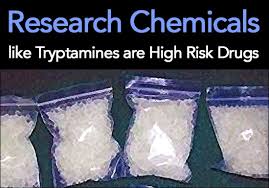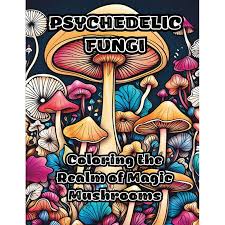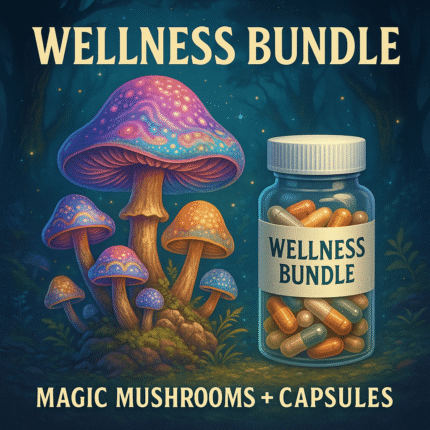Blog
From Shulgin to Today: The Evolution of Tryptamine Research

Tryptamine Research Online. Great topic! Here’s a detailed overview for “From Shulgin to Today: The Evolution of Tryptamine Research” — would you like a brief summary, an in-depth article, or an outline to get started?
Brief summary:
Tryptamine research began with pioneers like Alexander Shulgin, who synthesized and bioassayed numerous tryptamine derivatives in the 1960s and 70s, documenting their effects in his book TiHKAL. Since then, research has evolved with advances in chemistry, neuroscience, and pharmacology, leading to deeper understanding of tryptamine’s role in brain function and potential therapeutic applications, especially in mental health treatment. Modern studies are exploring psychedelics like psilocybin and DMT for conditions such as depression and PTSD, integrating decades of foundational knowledge from Shulgin’s work.
Detailed outline for an article: – Tryptamine Research Online
I. Introduction
- Definition of tryptamines and their natural occurrence
- Importance in neurochemistry and psychopharmacology
II. Alexander Shulgin and the Birth of Modern Tryptamine Research
- Brief bio of Shulgin
- Synthesis and exploration of new compounds (focus on tryptamines)
- Publication of TiHKAL and its impact
III. Early Scientific Understanding
- Initial studies on serotonin and related neurotransmitters
- Early bioassays and subjective effects
IV. Expansion of Research (1980s–2000s)
- Discovery of receptor subtypes (5-HT2A and others)
- Advances in synthetic techniques and analytical methods
- Cultural influence and underground research
V. Modern Developments and Clinical Research (2010s–Today)
- Revival of psychedelic research
- Clinical trials involving psilocybin, DMT, and other tryptamines
- Understanding mechanism of action in the brain (neuroplasticity, default mode network)
- Therapeutic potential in mental health (depression, anxiety, PTSD, addiction)
VI. Challenges and Ethical Considerations
- Legal status and regulatory hurdles
- Safety and abuse potential
- Need for rigorous scientific methodology
VII. Future Directions
- Novel tryptamine analogues and targeted therapies
- Integration with psychotherapy and personalized medicine
- Potential in neuroscience and consciousness studies
VIII. Conclusion
- Summary of the evolution from Shulgin’s pioneering work to current science
- The promise and responsibility of tryptamine research
Awesome! I’ll start with a full article on “From Shulgin to Today: The Evolution of Tryptamine Research.” Here’s the first part — let me know if you want me to keep going or focus more on any section!
From Shulgin to Today: The Evolution of Tryptamine Research
Introduction
Tryptamines are a class of compounds structurally related to the neurotransmitter serotonin (5-hydroxytryptamine). Naturally found in many plants, fungi, and animals, these compounds have profound effects on human neurochemistry, particularly influencing perception, mood, and cognition. Over the last several decades, tryptamines have moved from obscure molecules studied mainly in natural products and neurochemistry to central players in the expanding field of psychedelic research and therapeutic innovation.
Alexander Shulgin and the Birth of Modern Tryptamine Research
The story of modern tryptamine research is inseparable from the work of Alexander “Sasha” Shulgin. A chemist and pharmacologist, Shulgin was renowned for his ability to synthesize and bioassay novel psychoactive compounds. During the 1960s and 70s, Shulgin synthesized hundreds of phenethylamines and tryptamines, systematically exploring their chemical structure and subjective effects.
His seminal book, TiHKAL (Tryptamines I Have Known and Loved), co-authored with his wife Ann Shulgin, cataloged dozens of tryptamine compounds along with detailed descriptions of their synthesis, dosage, and experiential effects. This work laid the foundation for decades of research by providing both chemical tools and a roadmap for exploration.
Early Scientific Understanding – Tryptamine Research Online
Before Shulgin, tryptamines were primarily studied in the context of serotonin’s role in the brain. Serotonin’s discovery as a neurotransmitter in the mid-20th century opened new horizons in understanding mood regulation, sleep, and cognition. Early work revealed that many psychedelic tryptamines—such as N,N-Dimethyltryptamine (DMT) and psilocybin—acted on serotonin receptors, particularly the 5-HT2A receptor, but the exact mechanisms remained elusive.
-
DMT
Price range: $299.00 through $600.00 -
DMT Pens
$350.00 -
Dried Mushrooms
Price range: $210.00 through $220.00 -
Ibogaine
Price range: $210.00 through $350.00 -
Ketamine
Price range: $210.00 through $375.00 -
LSD
Price range: $250.00 through $350.00 -
Magic Mushroom Capsules
$250.00 -
MDMA
Price range: $250.00 through $320.00 -
Mushroom Chocolate Bars
Price range: $235.00 through $240.00



















